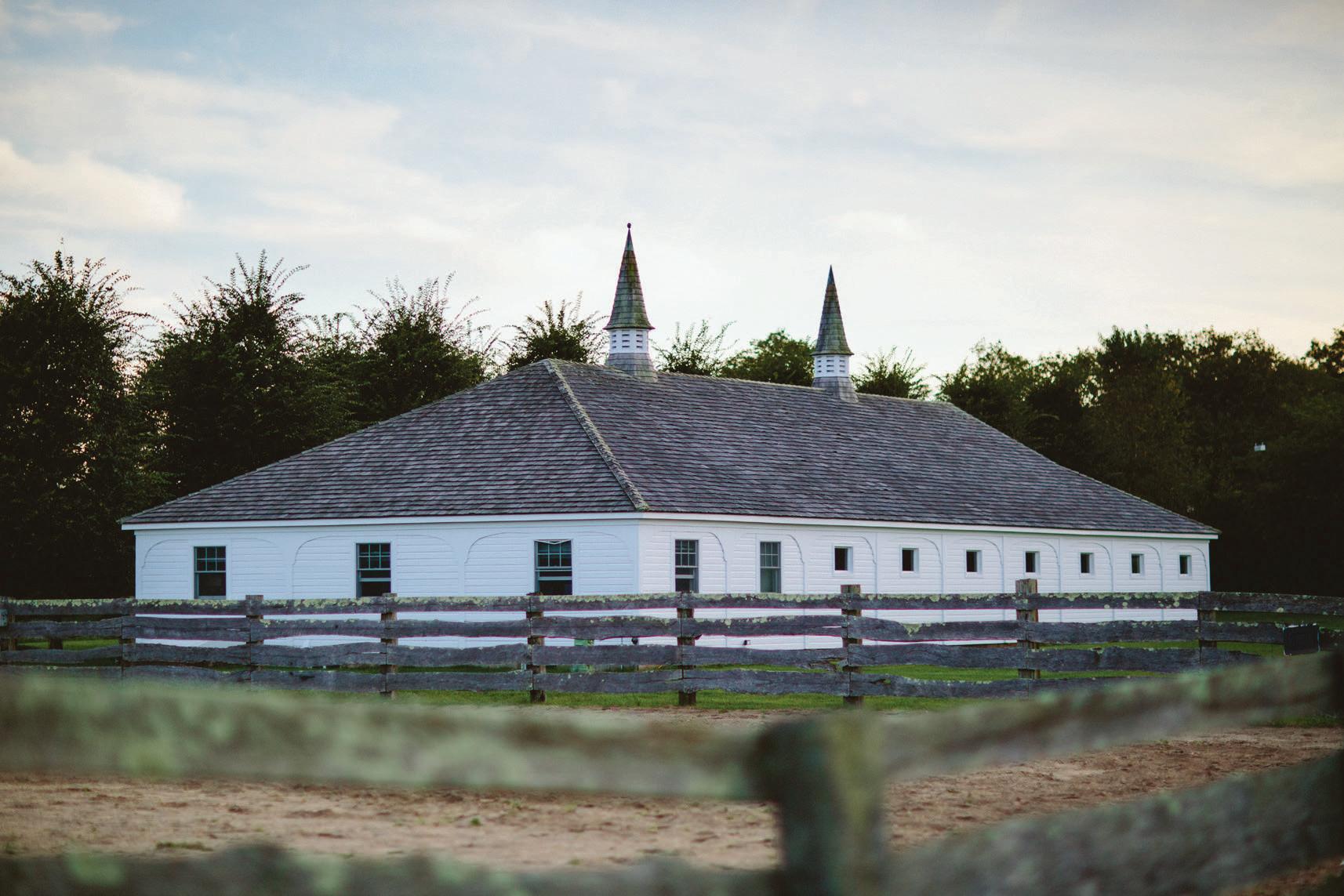5 minute read
RANCH HAND
Next Article

Peter Halley debuts new Cell Grid paintings at The Ranch in Montauk to be exhibited this fall at Dallas Contemporary.
BY CHRIS BYRNE
Peter Halley’s work has been shown extensively around the world. In 2022, the Musée d’Art Moderne GrandDuc Jean (Mudam), Luxembourg, will present a survey of his paintings from the 1980s. Recent solo exhibitions include the Lever House Art Collection, New York, 2018; the Schirn Kunsthalle, Frankfurt, Germany, 2016; the Santa Barbara Museum of Art, 2015; and the Musée d’art moderne et contemporain, Saint-Étienne, France, 2014.
In tandem exhibitions—at The Ranch in Montauk this June and Dallas Contemporary in the fall—Halley will exhibit his Cell Grid Paintings, 2014-2021.
Chris Byrne (CB): Were there specific images that led to the Cell Grid paintings? How did the series develop? Peter Halley (PH): In my paintings, I’m continually trying to explore how a small, closed set of two-dimensional icons—“prisons” and “cells” are connected through “conduits”—changes as they are subjected to different formal strategies. If the entire painting is only a prison, how is it different from a painting with a prison and a background? If there are two cells, what happens if they are both on the same canvas or if they are on two different canvases joined together? What happens when the icons are repeated in a compositional grid?

Top left and lower right: Majestic views of The Ranch. Photographs by Steven Stauffer. Peter Halley at The Ranch. Photograph by William Kahn.
I’ve always been influenced by the early work of Jasper Johns and by Warhol’s paintings of the ’60s. They explored these basic questions of how icons—like Johns’ American flag or Warhol’s electric chair— can shift meaning as the compositional strategies by which they are presented change. For some reason, I don’t think anybody is interested in this stuff anymore except for me.
For many years I made paintings that were grids of prisons. Each prison was on a separate canvas, and they were all bolted tightly together with no space in between. It was interesting to think of these repeated prisons pressed together like sardines. But I was hesitant to make grids of cells because I thought they would look too much like abstract modernist paintings. With no other reference point, it would be hard to say convincingly that the rectangles were cells and not just abstract forms. However, now that I’ve been making these paintings for five years, I’m intrigued by that ambiguity. I think the rough, pebbly, tactile Roll-A-Tex surface subverts the idea that the paintings are just abstractions. CB: And Peter Doroshenko suggested featuring these works at Dallas Contemporary? PH: Yes. I was hoping Peter could help me choose a thematic direction for this show. Peter told me a story about how he was once at an art fair and heard an art dealer trying to convince an art collector that one of the Cell Grid paintings was really by Peter Halley. Apparently the collector could not be persuaded. Peter Doroshenko thought that was a good reason to bring these paintings together, and I completely agreed. CB: Can you tell us about your installation at the Dallas Museum of Art in 1995? Has your impression of the city changed over the years? PH: Well, let me tell you a little bit about my long, happy history of exhibiting in Dallas. Annegreth Nill, who was then a curator at the DMA, invited me to do a project there in 1995. At the time, I was working with Gagosian gallery. I wanted to do my first installation there; it was to combine paintings with wall works, silkscreen prints, and relief sculpture. They turned down the idea, which was a big disappointment. But Annegreth invited me to do the installation in Dallas instead. That was a big moment for me. And as you know, in the early ’90s I also got to know you, Kenneth Turner, and John Runyon. You were all still in your twenties! But you were so supportive of my work—and all of you ended up being influential voices for contemporary art in Dallas and Fort Worth.
Then, in 2005, I got a fantastic commission to do an immense painting—17 by 40 feet—for the new American Airlines terminal at DFW. It’s certainly the biggest painting I’ve ever made. Most artists never get the opportunity to do anything that big in their whole careers. CB: We’re excited to debut the new paintings— The Other Path (2021), Wrong Turn (2021), and Under the Light (2021)—at The Montauk Ranch in June. As we’ve discussed, The Ranch was Andy Warhol’s farm for many years (The Rollings Stones would visit to rehearse new material in the barn). Did the location’s history interest you? PH: Of course. I had never been to Montauk. The setting is magical, just forests and beach, since so much land is preserved as state parks. And from the barns at The Ranch, all you see are rolling fields and horses. CB: Peter Halley: Antesteria is currently on view at Museo Nivola in Orani, Sardinia through August 22. Following your exhibition at Dallas Contemporary, what projects can we look forward to? PH: I’m working on a book about my installations for the publisher JRP in Zurich. Then, in September, I’m having my first gallery show in Brazil, at Galeria Millan in São Paulo. Next year I’m exhibiting in New Zealand for the first time, at Gow Langsford Gallery. Even though I’ve been stuck in New York during the pandemic, the paintings seem to be traveling more and more. P


Above: Peter Halley, The Other Path, 2021, fluorescent acrylic and Roll-A-Tex on twelve attached canvases, 82 x 76 in. Collection of Marilyn Lenox, Dallas. Below: Peter Halley, Wrong Turn, 2021, fluorescent acrylic and Roll-A-Tex on eleven attached canvases, 80 x 66 in. Harkey Family Collection, Dallas. Photographs courtesy of Object Studies, New York.

